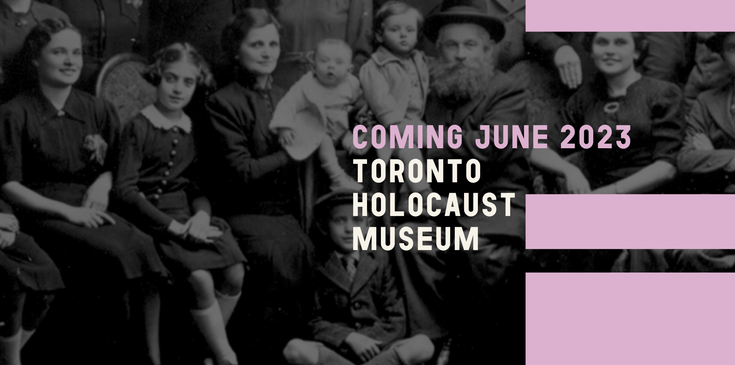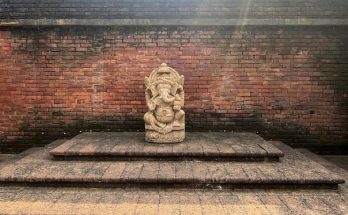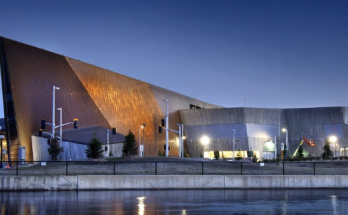Toronto/CMEDIA: Created by the United Jewish Appeal (UJA) Federation of Greater Toronto, the 9,500-square-foot Toronto Holocaust Museum (THM) opened its doors on June 9 with a ribbon-cutting ceremony attended by dignitaries and Holocaust survivors on the federation’s Sherman Campus, a Jewish community center at 4588 Bathurst St.
Funded by the federal and provincial governments as well as donors, THM replaces the city’s Holocaust Education and Memorial Centre with small number of exhibits founded in 1985 by local survivors who wanted to share their stories with students.
Jewish community center also hosts a theater, a daycare and other communal buildings. Solomon hopes this location will help facilitate connections between the historical exhibits and daily Jewish life in Toronto.
Comprising four galleries, a 40-seat theatre, a learning lab for school groups (expected to make up 60 to 70 percent of its estimated 80,000 annual visitors), THM has a room of remembrance, with the names of hundreds of Holocaust victims with a connection to Toronto inscribed on its walls.
The four galleries explore Jewish and minority persecution in both Europe and Canada, World War II atrocities and the beginnings of new life in Canada for thousands of refugees.
“What we set out to do from the very beginning was to ensure that this was a place to hear from survivors long after they’re gone,” the museum’s Executive Director Dara Solomon reportedly told the Jewish Telegraphic Agency. “Bringing the Holocaust survivors in to see how we’ve done that, and having them really happy and fulfilled, has been one of the most meaningful experiences of my personal and professional life.”
One of the more powerful exhibits in the new museum’s collection is a series of large video screens, populated with the images of more than 70 survivors and inviting visitors to “Explore Our Stories.”
On tapping the screen one can hear first-hand accounts drawn from almost four hours of recordings. It’s a way to keep history alive even after its witnesses are no more.
95 year old Nate Leipciger, a holocaust survivor of the Nazis’ Sosnoweic ghetto in occupied Poland and several concentration camps, immigrated to Canada in 1948 and has been a force for Holocaust education for decades, and was at a preview of the newly created THM on Thursday.
Images of pre-war Jews engaged in work and play, a reminder of the way things were, were found outside the entrance, and a warning not to take that for granted.
“Our life was like their life is today,” Leipciger said, referring to the many students he encounters as a speaker. “And then suddenly, beyond our control, it all changed.”
Artifacts, images and documents inside the museum tell the story of the Holocaust aimed at making it accessible to modern Torontonians.
Aimed at young learners, the space centers around 11 kiosks where large-as-life survivors share their testimonies through interactive videos.
Leipciger reportedly speaks eloquently about his experiences during the war, saying that Holocaust education is as important as mathematics and in 2019 wrote a memoir, ‘The Weight of Freedom’
“Without knowing the past, you don’t know what’s going to happen in the future,” he was reported saying “And we can’t say ‘this never happened.’ It’s basic information, basic knowledge.”
Students and adults, he continues, “have to know what man is capable of doing. They have to recognize the danger inherent in just being alive.”
While the center tells human stories from a genocide, some materials such as images of mass killings in pits on the outskirts of towns are stored in drawers that must be pulled out by willing viewers.
“We made some very conscious decisions to not use the incredibly graphic imagery I grew up with, because we know that students don’t learn as well as people have thought they did when they’re sad,” said Solomon. “If you’re making them sad and scaring them, the learning actually shuts down.”
The United States Holocaust Memorial Museum (USHMM) has reportedly advised Holocaust educators to use graphic material judiciously to achieve learning objectives and added graphic images and texts can exploit students’ emotional vulnerability instead of encouraging them to think critically in a safe environment.
Along with recorded testimonies, visitors at the new museum can now see artifacts that have never been shared with the public.
Also housed in the museum is a Torah rescued from a burning synagogue in the town of Brand, the night when the Nazis destroyed Jewish homes, businesses and synagogues throughout Germany and Austria in November 1938. The Torah was handed it to young U.S. army chaplain Gunther Plaut, who brought it home in a bazooka case and entrusted the scroll to the future THM before he died in 2012
Ontario Premier Doug Ford reportedly encouraged people both within and outside the Jewish faith to visit the museum to help educate many about the Holocaust.
Holocaust survivors in Toronto have wanted to see such a space become a reality for the last 40 years, said Solomon.
Leipciger whose story is featured in the museum, says he and many other survivors were too traumatized to initially talk about their experiences and the museum helps that history to be shared with others.
“For forty years, no one was ready to hear. No one was ready to hear the horrors that we endured…But we persevered with the help of the Jewish and Canadian community…the story of the Holocaust survivorwas nonetheless not yet complete…I take this opportunity to ask the second generation to write their story…their interactions with them, and how they struggled and prevailed in creating a new world in this beautiful, wonderful country,” said Leipciger.
THM is open Sundays through Thursdays 10 a.m. to 5 p.m. with extended hours (to 8 p.m.) Wednesdays.
Admission for adults is $18 and $12 for seniors, with free admission for those 25 and under, Holocaust survivors, Indigenous peoples, veterans, educators and journalists.
#TorontoHolocaustMuseum; #UnitedJewishAppeal; #survivors; #HolocaustSurvivors





